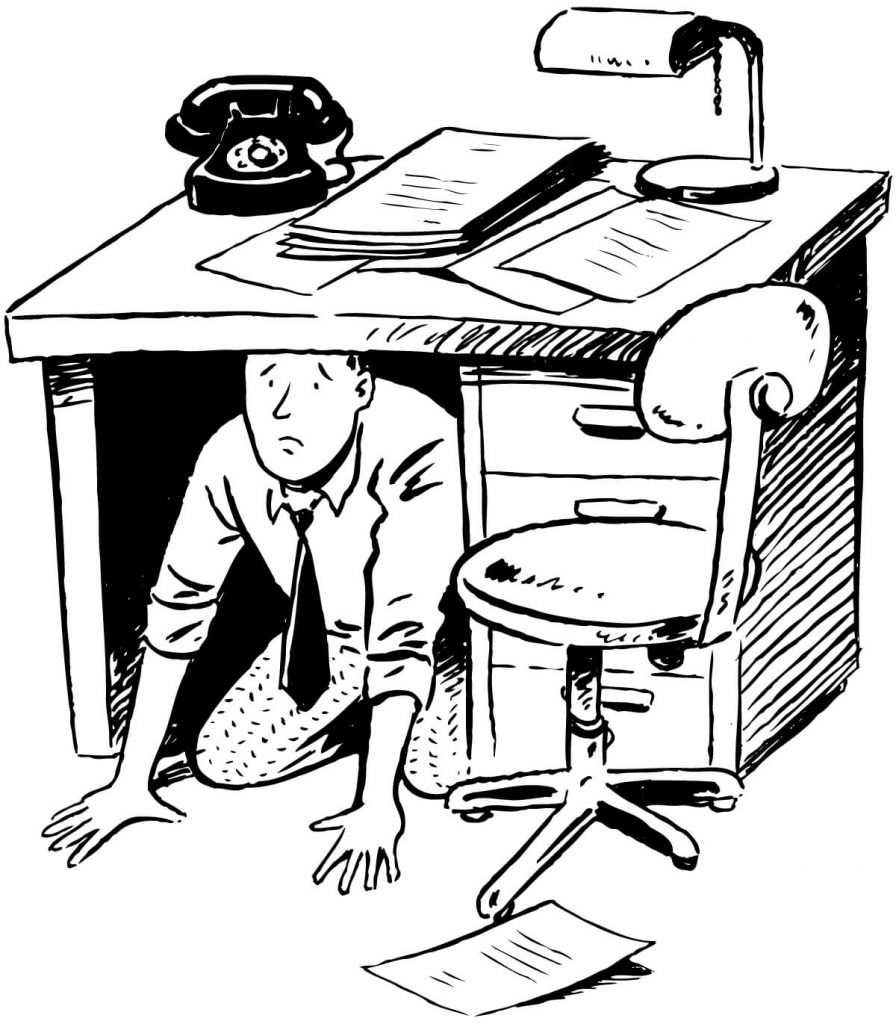How to Manage Burnout – the Buddha’s Way

(Photo credit: https://bit.ly/3PM2MXK)
More and more workers, especially those who are young, have been reporting feelings of burnout, a significant problem that has been haunting the working world for some time. How can we help ourselves to prevent burnout from happening, to detect it when it is about to occur, and to manage it after it has already set in? In this article, I will try to show how Buddhist meditation can help. But first, what is burnout?
What is Burnout?
In 1974, Herbert Freudenberger used the term “burnout” in Staff Burnout to describe an occupational syndrome resulting from chronic work-related stress. Burnout is now defined by the World Health Organization as:
a syndrome conceptualized as resulting from chronic workplace stress that has not been successfully managed. It is characterized by three dimensions:
- feelings of energy depletion or exhaustion;
- increased mental distance from one’s job, or feelings of negativism or cynicism related to one’s job; and
- reduced professional efficacy.
Burnout refers specifically to phenomena in the occupational context and should not be applied to describe experiences in other areas of life.

(Photo credit: https://bit.ly/3xfoATp)
Nowadays, however, some psychologists also perceive burnout in marriages, relationships, parenting, society, and politics.
Burnout has negative effects. It is associated with reduced job performance, coronary heart disease, and mental health problems. Examples of symptoms include a lack of interest in work, cynicism within the workplace, poor relationships with coworkers, clients, and the organization, as well as feelings of helplessness and depression. Burnout can also zap the joy out of our career, friendships, and family interactions.
How Burnout Occurs
Burnout results from chronic stress. In other words, if there is no stress, there is no burnout.

Freudenberger developed a 12-stage model for the development of burnout as follows:

(Credit: https://bit.ly/38TwBoA)
Nowadays, a more simplified, five-stage model, is used (see below).

(Credit: https://bit.ly/3a1CJLO)
Burnout is, again, a state of emotional, mental, and often physical exhaustion brought on by prolonged or repeated stress. General stressors include repetitive and meaningless tasks, pressure to perform, working long hours, and exhaustion due to isolation. Continual exposure to stressful situations, such as caring for an ill family member or witnessing upsetting news can also lead to it.

(Photo credit: https://bit.ly/3t5CI09)
Fighting Burnout
Burnout is a stress-induced symptom. Therefore, quick fixes are not typically successful long-term. Taking control and addressing underlying stressors is one of the most effective ways to beat burnout. A threefold M-approach, encompassing the mental management of thoughts, medication, and meditation, may be recommended. While I am not fit to guide the reader through issues of medication, I would like to encourage mental management and meditation, about which I have written extensively, particularly through a Buddhist approach.
For mental management, we may take up Jeff Comer Psy.D.’s ten ways to fight burnout, which include: focusing on what we can control and disregarding what is beyond our control, changing our mindset towards stress, freeing ourselves from negative biases, loneliness, and isolation, avoiding multi-tasking, and embracing our passions. A wealth of research on the websites of the American Psychological Association, National Center for Biotechnology Information, and Harvard Medical School, shows that mindfulness meditation has helped people manage their stress and improve their overall well-being. In addition, individuals such as Shona Mitchell, Managing Director of Headspace, have written to testify over the years that meditation has helped them through crippling, burnout periods.
Mindfulness meditation is defined as, “a mental training practice that teaches us to slow down racing thoughts, let go of negativity, and calm both our mind and body,” and it is also defined (see p. 1765) by P. A. Payutto, Thailand’s most famous scholar Buddhist monks, as, “the state of focused attention on one object.” When meditating, the mind is firmly established on one object; attention is not distracted and does not waver. My article Meditation in Thailand discusses at length how to meditate. Here, I would like to recapitulate the process, should you wish to try meditation.
First, find a good spot, where you can feel comfortable and undistracted (location can influence the ability to meditate properly). You may sit in a chair or bed or on the ground; however, try to sit with your legs crossed and your back straight (Buddhists believe that erect posture strengthens the connection between mind and body). Relax while maintaining good posture. Then, close your eyes and accept all sensations as they filter through you. Don’t judge them. Rather, focus on your breathing. If you get distracted, gently guide yourself back to the sound and rhythm of your own breathing. The aim is to achieve active and focused, moment-by-moment awareness of your present experience.



(Photo credit: https://bit.ly/3NjHL5H)
Ideally, meditation should be practiced daily and at the same time. Studies suggest that 13 minutes of meditation per session is sufficient to reduce stress, and that meditation for 20 minutes a day for 8 weeks can result in lower levels of the stress hormone cortisol. In terms of structural cerebral changes, meditation activates our prefrontal cortex, linked to the regulation of emotions, and in the long run, thickens and strengthens it.
If you feel like you are burned out or on the verge of it, please do give meditation a try.

(Photo credit: https://bit.ly/3LYcrr1)

(Photo credit: https://bit.ly/3wYKxaj)

(Photo credit: https://bit.ly/3GwK7La)
Sources
- Andrea Yu. Why Gen Z workers are already so burned out. https://bbc.in/3GxfPs4
- Jeff Comer Psy.D. 10 Ways to Beat Burnout. https://bit.ly/3aul9Aq
- Bhikkhu P.A. Payutto. Buddhadhamma: The Law of Natures and Their Benefits to Life. https://bit.ly/3t4wBJg
Author: Paitoon Songkaeo, Ph.D.
15 June 2022


